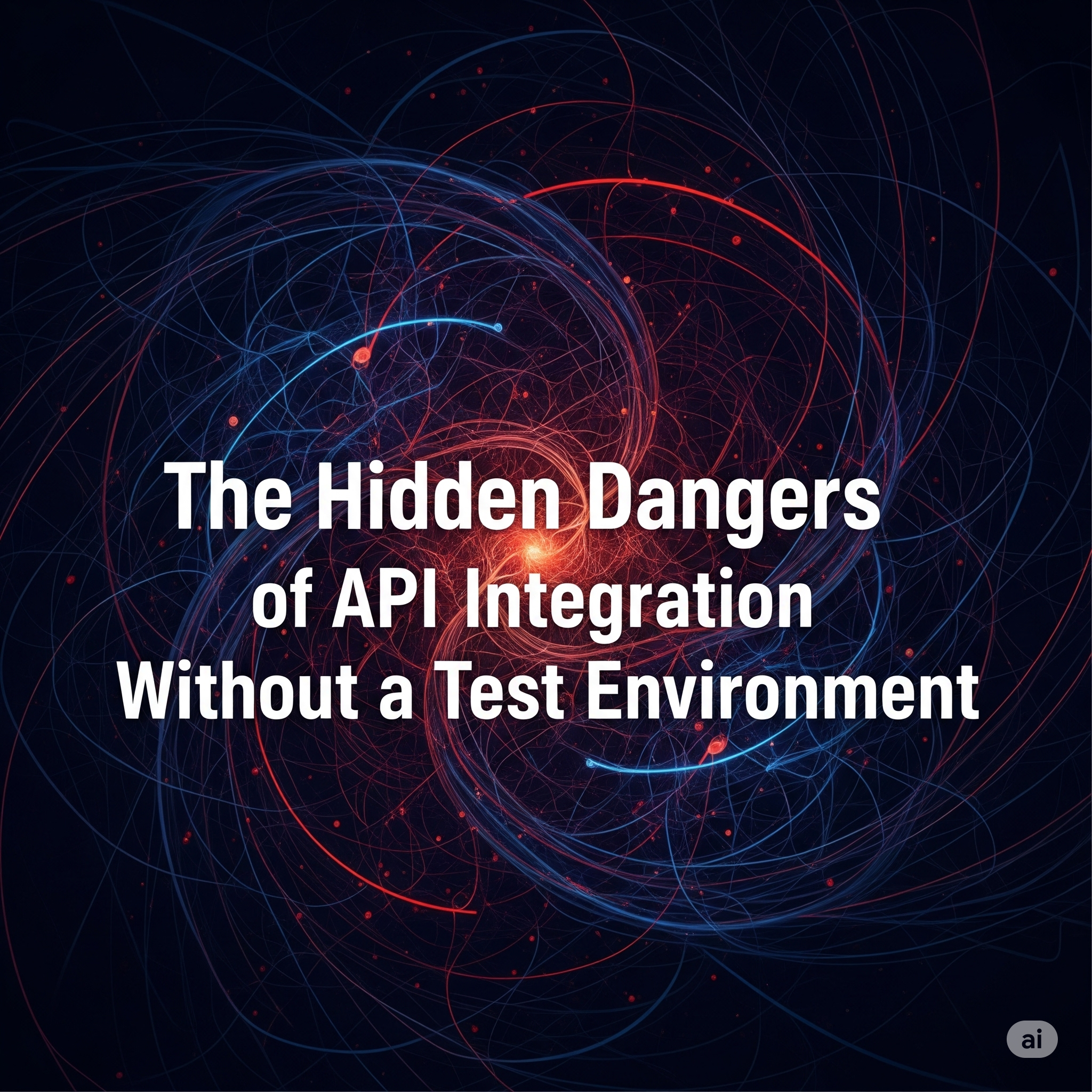
The Hidden Dangers of API Integration Without a Test Environment
API integration has become the backbone of modern digital transformation, enabling businesses to connect systems, automate workflows, and deliver seamless customer experiences. Yet, for many companies, the journey from idea to successful integration is fraught with obstacles—especially when a crucial element is missing: a dedicated test environment.
This article dives into the real-world challenges customers face when forced to integrate directly with production APIs—and why this “production-only” approach is not just risky, but also inefficient and expensive.
The Reality: No Sandbox, Only Live Production APIs
Imagine Acme Corp, a fast-growing SaaS provider, eager to leverage your company’s APIs. Their developers are ready to build. But then they learn—there’s no sandbox. Every API call during development hits your live production system.
This scenario is more common than it should be. Many API providers skip test environments to save time or infrastructure costs. But the long-term consequences? Painful for everyone involved.
Key Challenges: Why Production-Only API Access is Risky
- High Risk to Production Data Integrity
One malformed request or an accidental write operation can corrupt live data or trigger business-critical actions. There’s no safety net, and even minor mistakes can lead to outages, security incidents, or compliance breaches.
- DDoS-like Behavior and Rate Limiting Issues
During development, it’s natural for engineers to send bursts of API requests. But on a production system, this can resemble a DDoS attack—leading to throttling, blocked IPs, or degraded performance for all users.
- Unexpected Bill Shock for API Calls
Production APIs often incur charges per request. Hundreds of test calls quickly add up, resulting in unexpected costs that can derail budgets—especially for small teams or startups.
- Increased Support Burden and Slower Resolution
With no room to test safely, developers raise more tickets for issues that should be caught earlier. This strains your support teams and slows down integration timelines.
- Significant Security and Compliance Risks
Unvetted code interacting with real data can lead to leaks, unauthorized access, or non-compliance with regulations like GDPR or HIPAA. It’s a legal and reputational minefield.
The Developer’s Perspective: The Stress of No Test Environment
Developers thrive in safe, feedback-rich environments. Without a sandbox, they’re forced to work with training wheels off—checking every line twice, working slower, and fearing the next production incident. The lack of confidence kills productivity and innovation.
Why Do Companies Skip Dedicated API Test Environments?
Sandboxes require extra infrastructure, syncing with prod systems, and ongoing maintenance. Fast-moving companies sometimes view these as unnecessary friction. But what they save in setup, they pay back many times over in support load, slower onboarding, and broken trust with developers.
The Urgent Need for a Better API Integration Solution
Integrating directly with production APIs introduces unacceptable risk, cost, and friction for developers and businesses alike. In Part 2 of this series, we’ll show how API mocking and stubbing platforms—like GetFakeAPI—give developers a safe, scalable, and affordable way to build and test with confidence.
Read next: The Rise of API Stubbing: How to Build Safely Without Touching Production